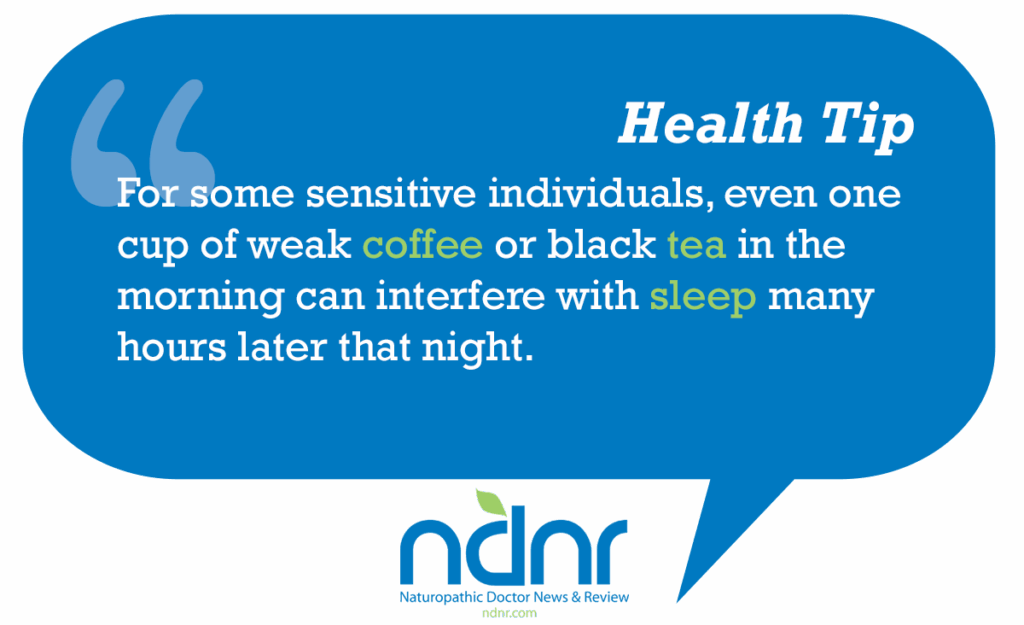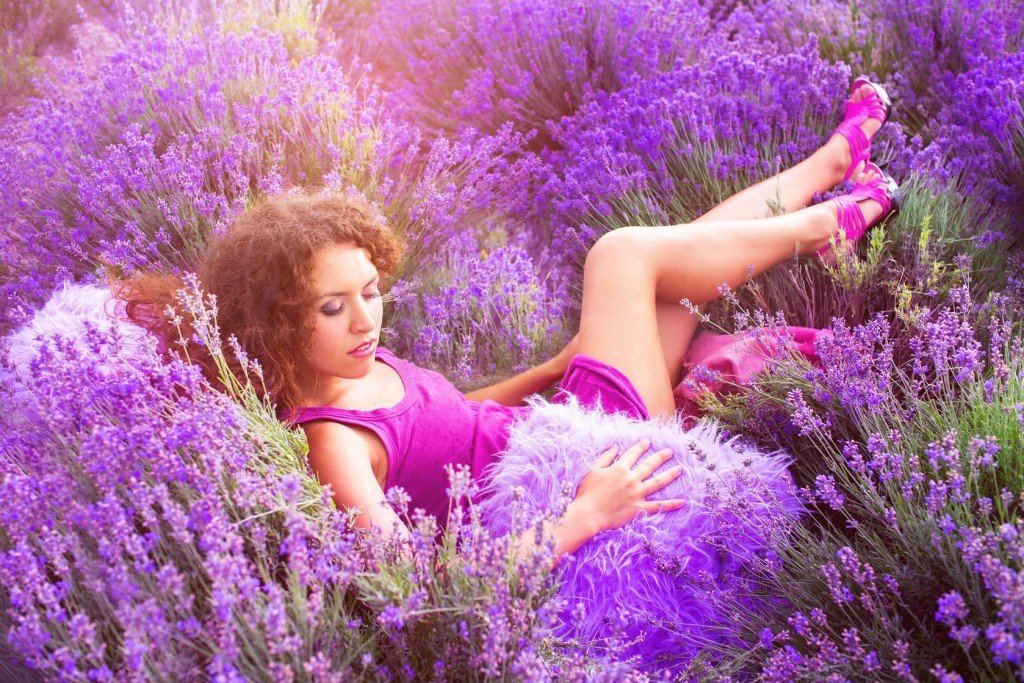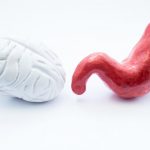Jillian Stansbury, ND
Sleep, and probably even dreaming, is essential to good health. Over the years I have seen enough people with sleep disorders to group them into several general categories: basic stress and nervous disorders, blood sugar and cortisol dysregulation, menopausal and hormonal imbalances, and musculoskeletal pain and physical restlessness. Each of these is best addressed with specific herbs and nutrients.
The physiology of sleep and wakefulness is not entirely understood. We aren’t even sure why we must sleep, as opposed to simply resting our bodies. Perhaps we just a need a break from physical activity and the constant mental chatter that being awake creates. Perhaps we need to dream and access the subconscious in order to be healthy.
 The reticular formation and the hypothalamus of the brain are both believed to be involved in the induction of sleep and in the maintenance of wakeful alertness. In wakeful alertness, one’s state of consciousness is characterized as empty of any particular content, but nevertheless active and alert above the threshold of awareness.1
The reticular formation and the hypothalamus of the brain are both believed to be involved in the induction of sleep and in the maintenance of wakeful alertness. In wakeful alertness, one’s state of consciousness is characterized as empty of any particular content, but nevertheless active and alert above the threshold of awareness.1
Numerous neurotransmitters are involved in wakefulness including acetylcholine, dopamine, norepinephrine, histamine, and glutamic acid. Although their exact roles are not understood, fatty acids, adenosine, prostaglandins, peptides, and steroids also play a role in initiating and sustaining the phenomenon of sleep.
Insomnia
Insomnia is the failure to initiate and maintain sleep, and has many causes. Around one third of the population suffers from at least occasional insomnia. All infants and most toddlers have fragmented sleep, but this is considered normal and is not true insomnia. Many elderly people seem to evolve into different sleep preferences, needing both less nighttime sleep and an afternoon nap. This also may be normal, and unless an elderly person is complaining of fatigue due to lack of sleep or is otherwise uncomfortable, a change in sleep patterns does not require therapy.
True insomnia can be a mild nuisance when a person requires an hour or more to unwind enough to fall asleep. Insomnia can reach crisis status when prolonged lack of sleep produces severe dysfunction and mental/emotional consequences. Stress, worry and emotional turmoil may all produce insomnia. Abnormalities in any of the neurotransmitters, fatty acids, prostaglandins, or other biochemicals mentioned may produce insomnia. Pain and discomfort can produce insomnia. Blood sugar, thyroid, and adrenal imbalances can also disrupt sleep. Caffeine ingestion can, of course, interfere with sleep. For some sensitive individuals, even one cup of weak coffee or black tea in the morning can interfere with sleep many hours later that night. Alcohol can also impair sleep. Alcohol promotes adrenaline secretion and interferes with the uptake of tryptophan into the brain.
Sleep is characterized by two distinct states: REM and non-REM sleep. REM, or Rapid Eye Movement, is so named because during REM sleep the eyeballs are known to rapidly flutter and move beneath the closed eyelids. Dreaming occurs during REM sleep and it is thought that the rapid movement of the eyeballs is in response to dreaming. Non-REM sleep is often broken into 4 distinct stages, and REM sleep is thought to be stage 5, and the “deepest” portion of sleep. REM sleep occurs most in the later hours of sleep and subsequently dreaming occurs most in the last half of sleep.
It is thought that everyone dreams, even if dreams are not remembered in the morning. Nightmares and night terrors occur in REM sleep, while sleepwalking is a phenomenon of non-REM sleep. REM sleep occurs in short bursts about every hour and a half in the later hours of sleep. Patients with dementia, schizophrenia and depression tend to struggle with insomnia and sleep disturbances more often than the non-depressed, non-psychotic population. Specifically, stages 3 and 4 of non-REM sleep are disturbed, and REM stages of sleep are reached unusually quickly in many depressed and psychotic individuals. Many patients with psychosis have intense, vivid, and bizarre dream lives, and have difficulty differentiating dreams from reality. Depressed patients often have unusual sleep cycles and many drugs for depression may cause nightmares or unpleasant dreams. I have also encountered more than one patient who experienced unpleasant dreams while using St John’s wort for depression. While this may seem like a minor side effect, such dreams can be so unpleasant that many prefer being depressed and discontinue the medication.
THERAPIES FOR INSOMNIA
Sleep Hygiene
A few all-purpose and general approaches to helping those with sleep disorders are addressing what I would call “sleep hygiene”. For one, as mentioned, caffeine and alcohol interfere with sleep. While a single glass of wine may help some to relax, larger amounts of alcohol can greatly impair sleep. Those with sleep difficulty should do a trial elimination of all caffeine and alcohol for several weeks and evaluate the result.
In other cases, people may not realize that they need to wind down in the evening to help the body to relax and prepare for sleep. For example, many of us do chores in the evening, watch a stimulating movie, and are very active right up to the moment of jumping into bed expecting to fall asleep. Helping the body to relax by limiting activities for the hour or two prior to going to bed is advised. Take a relaxing bath by candlelight, stretch while listening to music, have a cup of chamomile tea, or get into bed with some light reading.
While some people experience disturbed sleep if they eat too late in the evening, others may wake in the middle of the night when their stomachs are empty. Thus for these people, eating a little something before bed may actually improve sleep.
Vigorous exercise at some point earlier in the day is noted to improve sleep at night. Try an energetic hike in the morning, or any sort of exercise in the day to improve sleep and promote deeper muscle relaxation in bed at night.
A last sleep hygiene consideration is helping to establish clear light and dark rhythms in the bedroom. With so many artificial lights illuminating the night sky, our natural melatonin and serotonin rhythms may be disrupted from the interference with what should be the dark of night. Make an effort to get the bedroom truly dark. Invest in some heavy curtains that block out the street and other lights, and similarly make an effort to get strong bright light in the eyes upon waking in the morning to help promote natural pineal and pituitary rhythms.
In addition to doing everything possible to improve sleep hygiene, herbal and nutritional therapies can be added to help address each of the specific types of insomnia seen in clinical practice.
Basic Anxiety and Stress-Related Insomnia
First, general stress and nervous tension have affected most people’s sleep on at least a few occasions in their life. While we cannot solve all of our patient’s personal problems that lead to sleep disturbances, we can let them vent, make helpful suggestions, offer resources for problem solving, and teach stress-relieving practices. These can range from exercise, to journaling, to meditation, to deep breathing and so on as best suits their interests and nature.
These patients may benefit from B vitamins in the daytime and calcium and magnesium before bed. Any of our herbal nervines are appropriate, both during the day and double doses before bed. Matricaria, Avena, Verbena, Melissa, Passiflora, Scutellaria, and Valeriana are among the indicated choices. Simple teas may be sufficient for some, while others will need more aggressive dosages that can best be accomplished with tinctures and capsules. Teas nonetheless might still be encouraged due to the moment of respite and psychological break that tea drinking offers. Preparing and drinking a pot of tea can be the impetus to write in a journal, watch the clouds roll by, and de-stress, whereas taking tinctures and pills takes just seconds and has fewer psychological benefits. Apigenin, a flavonoid in Matricaria, binds GABA-A/benzodiazepine receptors,2 and almost everyone enjoys the flavor of chamomile tea.
Hypericum, a longtime classic in modern herbalism for anxiety and depression, is noted to have positive serotonergic,3 dopaminergic,4 and GABAergic5 actions, making it a broad-acting nervous system herb. One human study on Melissa showed a calming effect compared to controls, and additionally the subjects receiving the Melissa showed superior speed of mathematical processing compared to control subjects.6 Gramine, a tryptophan-based alkaloid found in Avena, is noted to have a vasorelaxant effect via 5-HT (2A) receptor antagonism.7 Oats, lemon balm, and Hypericum would also make a decent all-purpose nervine tea combined with chamomile, or more concentrated extracts can be employed.
The “harmine” alkaloids found in Passiflora incarnata have muscle relaxing and anxiolytic effects. Like melatonin, serotonin and some hallucinogenic substances in other plants, the harmine alkaloids are indole compounds derived from tryptophan. Incidentally, vitexin and isovitexin are flavonoids found in both Passiflora and Vitex.8 Passiflora also contains the flavonoid chrysin, reported to bind benzodiazepine/GABA receptors in the CNS.9,10 One study reported that the combination of Passiflora and Piper methysticum was more effective in reducing amphetamine-induced hypermotility than either of the herbs used singly.11
Valeriana contains the anxiolytic monoflavonoid wognonin credited with some of the calmative effects of this classic sleep herb.12 This and other constituents in Valeriana, such as valerinic acid, are also noted to bind GABA receptors13 and promote relaxation and improve sleep latency. Wogonin is also found in Scutellaria baicalensis along with other flavones baicalein, oroxylin and skullcapflavone, all noted to bind GABA receptors.14,15
Eschscholzia and Corydalis, being weak opiates, are also possibilities for those with stress and an inability to relax the body. They may be added to tea mixtures, or used as tinctures or encapsulations. Opiates have been shown to play a role in temperature and hormonal regulation, thus opiate-promoting herbs are appropriate for menopausal insomnia, in addition to general stress. The isoquinoline alkaloids in these Papaveraceae (poppy) family plants are derived from tyrosine and are shown to influence neurotransmitter pathways, especially opiate transmission, which in turn may promote GABAergic transmission.16 Both Eschscholzia and Corydalis may also affect endogenous endorphins and enkephalin metabolism in a manner that enhances analgesia.17 Some researchers have reported that the opiates in Eschscholzia inhibit the enzymatic breakdown of catecholamines as well as the synthesis of adrenalin, while Corydalis cava enhances the degradation of adrenaline.18 Hence, the two plants may be synergistic and useful in combination, especially for adrenaline-related sleep disorders.
Insomnia Related to Adrenal Dysfunction
For those with long-term stress and anxiety, the simple nervines can be complemented by the addition of adaptogenic herbs. Long-term stress, overwork, worry, and emotional turmoil, as all NDs know, lead to adrenal disruption. Interference with the HPA axis (hypothalamic-pituitary-adrenal axis) and downregulation of the entire adrenal gland will result in longer-term stress, and simple nervines may no longer suffice.
Like the melatonin and serotonin rhythm, cortisol also has a diurnal rhythm where it rises in the morning light and falls in the evening, remaining low throughout the night. In many people with adrenal dysregulation however, cortisol does not decline in the evening; or when it does, it may start to rise again in the middle of the night and disturb sleep. The adaptogenic herbs are known to help restore adrenal balance as well as the diurnal rhythm of cortisol. Glycyrrhiza, Panax, Eleutherococcus and my personal favorite, Withania, may all help restore adrenal tone. It may seem paradoxical that classic energy and alertness herbs such as Panax and Eleuthero can also improve sleep, but it’s quite true. For those with stress symptoms, poor concentration, and poor sleep, they are in fact the perfect remedy. During chronic stress, Withania has been shown to improve glucose regulation, normalize plasma corticosteroids, and improve cognition.19 The adaptogens can be combined with nervines in tinctures and encapsulations and be taken all day long. This can be complemented with a nervine tea, calcium-magnesium supplement, and sleep rituals in the evening.
Dysglycemia-Related Insomnia
Another type of insomnia patient to be on the lookout for is one with dysglycemia. Coffee and alcohol, mentioned previously, will also worsen glucose regulation and can be a clue in a patient’s history when poor sleep is associated with even small amounts of these beverages. Any moment of low blood sugar during the night can make for restless and poor sleep the entire night. One method the body has to liberate glucose is to kick out cortisol and adrenalin, which promote conversion of stored fats and carbs into sugars for immediate use. Both cortisol and adrenalin release in the middle of the night, of course, will contribute to insomnia and restless sleep. Low glucose also has the tendency to promote bizarre dreams. If you have a patient whom you suspect of having poor nutrition, alcoholism, and/or dysglycemia mention bizarre dreams in association with restlessness and frequent waking, try having them eat a protein-containing light meal or snack before bed.
As all ND readers will be aware, having normal blood glucose on a routine chem screen does not necessarily rule out dysglycemia. Blood sugar phenomena can be extremely transient and the biochemical domino effect that ensues can contribute to mental confusion, emotional volatility, and poor and restless sleep. For these patients, use herbal nervines as a stopgap measure while working on overall nutrition and alcohol and caffeine elimination. Eating multiple small meals that feature protein and including a before-bed snack can be the cure for this type of insomnia.
Though dietary and nutritional measures are probably the most effective, adrenal herbs are also useful for blood sugar regulation. Best known for its circulatory effects, Ginkgo biloba has been found to inhibit stress-induced corticosterone hypersecretion via a mechanism involving adrenal benzodiazepine receptors. Furthermore, Ginkgo has been noted to prevent promotion of CRH (corticotropin-releasing hormone) gene expression, seen with stress and dysglycemic phenomena.20
Menopausal Insomnia
Another type of insomnia frequently seen in clinical practice is sleep disturbances occurring as part of the menopausal transition. Some women may wake due to hot flashes at night, sometimes followed by episodes of chilling. For others, insomnia is independent of hot flashes.
Once again, the adaptogenic herbs Panax, Eleutherococcus, Withania, and Lepidium are key herbs in formulas for menopausal insomnia. I get the best results with fairly large dosages and frequent use, and ramp down as symptoms improve. When hot flashes are disturbing sleep, as well as occurring in general, I always add Salvia officinalis to the formula with it being the most effective herb I have tried. Rosmarinic acid, found in several Lamiaceae (mint) family plants, including rosemary (Rosmarinus), sage (Salvia) and lemon balm (Melissa), is reported to have anxiolytic effects.21 Moreover, Salvia officinalis is also reported to bind benzodiazepine receptors, further contributing to a relaxing effect.22 The GABA-binding apigenin previously mentioned to occur in Matricaria also occurs in Salvia.22 Some researchers have reported that apigenin may have other central nervous system effects involving dopaminergic mechanisms.23 When combined with the impressive antisudorific activity, Salvia makes for an important ingredient in menopausal hot flash and insomnia formulas. Salvia is a folkloric herb for memory and is presently being investigated for Alzheimer’s disease and dementia, and would be appropriate for those with “brain fog” due to stress and poor sleep.
Herbs such as Cimicifuga and Vitex may be useful additions for improving general hormonal balance and regulating problematic menses. Diterpenes in Vitex agnus castus are noted to have dopaminergic activity24-26 which may lend the herb an ability to regulate FSH and LH, as well as have mood enhancing effects, particularly for premenstrual and menopausal mood disorders.27 Cimicifuga also has antianxiety and antidepressant effects via dopaminergic mechanisms28 and activity at opiate receptors in the central nervous system,29 in addition to its isoflavones that may lend it hormonal activities.
Musculoskeletal-Related Insomnia
Lastly, insomnia may be due to bodily discomfort and muscle tension. Fibromyalgia patients, for example, often sleep poorly and improving sleep seems key to improving the entire condition. Cimicifuga, Eupatorium perfoliatum, Valeriana, Piper methysticum and Viburnum are among the starter herbs I consider for patients with fibromyalgia. These herbs are also appropriate for those with restless leg syndrome and general muscle tension. Though typically categorized as a “female” herb, Cimicifuga was widely used in the 1800s for rheumatic conditions, anxiety disorders, and tight spastic muscles. For arthritis and other musculoskeletal inflammatory conditions, herbs such as Salix, Piscidia erythrina, Harpagophytum, Yucca, Boswellia, Curcuma and Equisetum may also be appropriate to add to the greater treatment protocol. The proteolytic enzyme bromelain would also be appropriate to include.
All-Purpose Insomnia Tea
- Matricaria
- Scutellaria
- Passiflora
- Avena sativa
- Glycyrrhiza
- Rose petals
- Lavender blossoms
- Mentha spicata
Equal parts or alter to taste; steep 1 tbsp per cup hot water, strain and drink as much as possible.
Stress-Related Insomnia – Tincture
- Valerian
- Avena
- Verbena
- Passiflora
Equal parts; take 1-2 droppers tid-qid for stress symptoms. Take 2-3 droppers an hour before bed and repeat upon getting into bed for insomnia.
Insomnia with Adrenal Disorders
- Withania 1 oz
- Eleutherococcus ½ oz
- Hypericum ½ oz
Insomnia with Adrenalin Symptoms
- Eschscholzia
- Corydalis
- Withania
- Matricaria
Equal parts taken all day long; double doses before bed.
Restless Leg Related Insomnia
- Eschscholzia
- Corydalis
- Piper methysticum
- Valeriana
Equal parts taken all day long; double doses before bed.
Insomnia with Dysglycemia
- Panax
- Withania
- Avena
- Ginkgo
Equal parts taken all day long and before bed with a high protein snack.
Insomnia with Hot Flashes
- Salvia 1 oz
- Withania ½ oz
- Cimicifuga ½ oz
Equal parts taken all day long; double doses before bed.
Menopausal Insomnia
- Withania ½ oz
- Vitex ½ oz
- Cimicifuga ½ oz
- Melissa ½ oz
Equal parts taken all day long; double doses before bed.
Insomnia with Muscle Pain
- Piper methysticum
- Cimicifuga
- Eupatorium perfoliatum
- Viburnum
Equal parts taken all day long; double doses before bed.
Insomnia with Musculoskeletal Inflammation
- Withania
- Cimicifuga
- Salix
- Curcuma
Equal parts taken all day long; double doses before bed.
 Jillian Stansbury, ND has practiced in SW Washington for nearly 20 years, specializing in women’s health, mental health and chronic disease. She holds under-graduate degrees in medical illustration and medical assisting, and graduated with honors in both programs. Dr. Stansbury also chairs the botanical medicine program at NCNM and teaches the core botanical curricula, a position she has held for over 18 years. In addition, Dr. Stansbury also writes and serves as a medical editor for numerous professional journals and lay publications, plus teaches natural products chemistry and herbal medicine around the country. At present she is working to set up a humanitarian service organization in Peru and studying South American ethnobotany. She is the mother of two adult children, and her hobbies include art, music, gardening, camping, international travel and studying quantum and metaphysics
Jillian Stansbury, ND has practiced in SW Washington for nearly 20 years, specializing in women’s health, mental health and chronic disease. She holds under-graduate degrees in medical illustration and medical assisting, and graduated with honors in both programs. Dr. Stansbury also chairs the botanical medicine program at NCNM and teaches the core botanical curricula, a position she has held for over 18 years. In addition, Dr. Stansbury also writes and serves as a medical editor for numerous professional journals and lay publications, plus teaches natural products chemistry and herbal medicine around the country. At present she is working to set up a humanitarian service organization in Peru and studying South American ethnobotany. She is the mother of two adult children, and her hobbies include art, music, gardening, camping, international travel and studying quantum and metaphysics
References
- Young JD, Taylor E. Meditation as a voluntary hypometabolic state of biological estivation. News Physiol Sci. 1998;13:149-153.
- Viola H, Wasowski C, Levi de Stein M, et al. Apigenin, a component of Matricaria recutita flowers, is a central benzodiazepine receptors-ligand with anxiolytic effects. Planta Med. 1995;61(3):213-216.
- Khalifa AE. Neural monoaminergic mediation of the effect of St. John’s wort extract on prepulse inhibition of the acoustic startle response in rats. J Psychopharmacol. 2005;19(5):467-472
- Viana AF, do Rego JC, Munari L, et al. Hypericum caprifoliatum (Guttiferae) Cham. & Schltdl.: a species native to South Brazil with antidepressant-like activity. Fundam Clin Pharmacol. 2006;20(6):507-514.
- Kubin A, Wierrani F, Burner U, Alth G, Grünberger W. Hypericin–the facts about a controversial agent. Curr Pharm Des. 2005;11(2):233-253.
- Kennedy DO, Little W, Scholey AB. Attenuation of laboratory-induced stress in humans after acute administration of Melissa officinalis (Lemon Balm). Psychosom Med. 2004;66(4):607-613.
- Froldi G, Silvestrin B, Dorigo P, Caparrotta L. Gramine: a vasorelaxing alkaloid acting on 5-HT(2A) receptors. Planta Med. 2004;70(4):373-375.
- Soulimani R, Younos C, Jarmouni S, Bousta D, Misslin R, Mortier F. Behavioural effects of Passiflora incarnata L. and its indole alkaloid and flavonoid derivatives and maltol in the mouse. J Ethnopharmacol. 1997;57(1):11-20.
- Medina JH, Paladini AC, Wolfman C, et al. Chrysin (5,7-di-OH-flavone), a naturally-occurring ligand for benzodiazepine receptors, with anticonvulsant properties. Biochem Pharmacol. 1990;40(10):2227-2231.
- Wolfman C, Viola H, Paladini A, Dajas F, Medina JH. Possible anxiolytic effects of chrysin, a central benzodiazepine receptor ligand isolated from Passiflora coerulea. Pharmacol Biochem Behav. 1994;47(1):1-4.
[1]1. Capasso A, Sorrentino L. Pharmacological studies on the sedative and hypnotic effect of Kava kava and Passiflora extracts combination. Phytomedicine. 2005;12(1-2):39-45.
[1]2. Tai MC, Tsang SY, Chang LY, Xue H. Therapeutic potential of wogonin: a naturally occurring flavonoid. CNS Drug Rev. 2005 Summer;11(2):141-150.
- Yuan CS, Mehendale S, Xiao Y, Aung HH, Xie JT, Ang-Lee MK. The gamma-aminobutyric acidergic effects of valerian and valerenic acid on rat brainstem neuronal activity. Anesth Analg. 2004;98(2):353-358.
[1]4. Liao JF, Wang HH, Chen MC, Chen CC, Chen CF. Benzodiazepine binding site-interactive flavones from Scutellaria baicalensis root. Planta Med. 1998;64(6):571-572.
[1]5. Huen MS, Leung JW, Ng W, et al. 5,7-Dihydroxy-6-methoxyflavone, a benzodiazepine site ligand isolated from Scutellaria baicalensis Georgi, with selective antagonistic properties. Biochem Pharmacol. 2003;66(1):125-132.
[1]6. Schäfer HL, Schäfer H, Schneider W, Elstner EF. Sedative action of extract combinations of Eschscholtzia californica and Corydalis cava. Arzneimittelforschung. 1995;45(2):124-126.
- Reimeier C, Schneider I, Schneider W, Schäfer HL, Elstner EF. Effects of ethanolic extracts from Eschscholtzia californica and Corydalis cava on dimerization and oxidation of enkephalins. Arzneimittelforschung. 1995;45(2):132-136.
- Kleber E, Schneider W, Schäfer HL, Elstner EF. Modulation of key reactions of the catecholamine metabolism by extracts from Eschscholtzia californica and Corydalis cava. Arzneimittelforschung. 1995;45(2):127-131.
- Bhattacharya SK, Muruganandam AV. Adaptogenic activity of Withania somnifera: an experimental study using a rat model of chronic stress. Pharmacol Biochem Behav. 2003;75(3):547-555.
- Marcilhac A, Dakine N, Bourhim N, et al. Effect of chronic administration of Ginkgo biloba extract or Ginkgolide on the hypothalamic-pituitary-adrenal axis in the rat. Life Sci. 1998;62(25):2329-2340.
2[1]. Awad R, Muhammad A, Durst T, Trudeau VL, Arnason JT. Bioassay-guided fractionation of lemon balm (Melissa officinalis L.) using an in vitro measure of GABA transaminase activity. Phytother Res. 2009;23(8):1075-81.
- Kavvadias D, Monschein V, Sand P, Riederer P, Schreier P. Constituents of sage (Salvia officinalis) with in vitro affinity to human brain benzodiazepine receptor. Planta Med. 2003;69(2):113-117.
- Zanoli P, Avallone R, Baraldi M. Behavioral characterisation of the flavonoids apigenin and chrysin. Fitoterapia. 2000;71 Suppl 1:S117-123.
- Jarry H, Spengler B, Wuttke W, Christoffel V. In vitro assays for bioactivity-guided isolation of endocrine active compounds in Vitex agnus-castus. Maturitas. 2006;55(Suppl 1):S26-36.
- Wuttke W, Jarry H, Christoffel V, Spengler B, Seidlová-Wuttke D. Chaste tree (Vitex agnus-castus)–pharmacology and clinical indications. Phytomedicine. 2003;10(4):348-357.
- Jarry H, Leonhardt S, Gorkow C, Wuttke W. In vitro prolactin but not LH and FSH release is inhibited by compounds in extracts of Agnus castus: direct evidence for a dopaminergic principle by the dopamine receptor assay. Exp Clin Endocrinol. 1994;102(6):448-454.
- Karanth S, Marubayashi U, McCann SM. Influence of dopamine on the altered release of prolactin, luteinizing hormone, and follicle-stimulating hormone induced by interleukin-2 in vitro. Neuroendocrinology. 1992;56(6):871-880.
- Jarry H, Metten M, Spengler B, Christoffel V, Wuttke W. In vitro effects of the Cimicifuga racemosa extract BNO 1055. Maturitas. 2003;44(Suppl 1):S31-S38.
- Rhyu MR, Lu J, Webster DE, Fabricant DS, Farnsworth NR, Wang ZJ. Black cohosh (Actaea racemosa, Cimicifuga racemosa) behaves as a mixed competitive ligand and partial agonist at the human mu opiate receptor. J Agric Food Chem. 2006;54(26):9852-9857.





